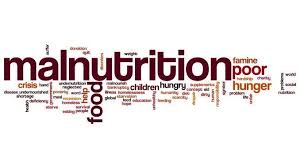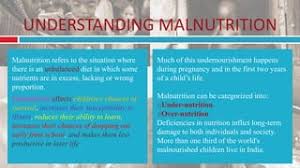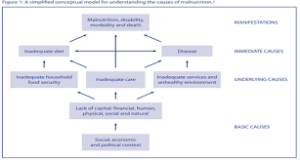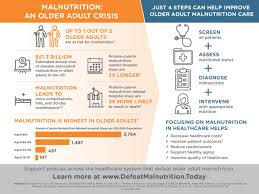Understanding Malnutrition: Causes, Consequences, and Solutions 
Malnutrition is a complex health issue that affects millions of people worldwide, transcending geographical, economic, and social boundaries. It encompasses a range of nutritional disorders resulting from an inadequate or imbalanced diet, leading to various health problems. Understanding malnutrition requires a deep dive into its causes, consequences, and potential solutions, as well as its various forms—under-nutrition and over-nutrition.
Defining Malnutrition
Malnutrition broadly refers to deficiencies, excesses, or imbalances in a person’s intake of energy and nutrients. It can be classified into two main categories:
- Under-nutrition: This occurs when an individual does not consume enough nutrients or energy. It can manifest as:
- Stunting: Low height for age, often due to chronic under-nutrition during the critical growth periods in childhood.
- Wasting: Low weight for height, indicating acute malnutrition often associated with illness or inadequate food intake.
- Underweight: Low weight for age, which may be a result of both stunting and wasting.
- Over-nutrition: This refers to the excessive intake of nutrients, leading to overweight and obesity. It can result from diets high in calories but low in essential nutrients, contributing to a range of non-communicable diseases (NCDs) such as diabetes, cardiovascular diseases, and certain cancers.
Causes of Malnutrition
Malnutrition is a multifaceted issue influenced by a variety of factors:
- Economic Factors:
- Poverty: Low income can limit access to nutritious foods, forcing individuals to choose cheaper, energy-dense foods that lack essential nutrients.
- Food Insecurity: Limited availability of food, whether due to geographic location or economic constraints, can lead to inadequate nutrition.
- Social Factors:
- Education: A lack of awareness about nutrition can result in poor dietary choices. Education on healthy eating habits is crucial, especially for caregivers and parents.
- Cultural Practices: Some cultures may prioritize certain foods over others, which can affect nutritional intake. Traditional diets may lack diversity or key nutrients.
- Health Factors:
- Illness: Chronic diseases, infections, and gastrointestinal disorders can increase nutrient requirements while simultaneously decreasing appetite or absorption, leading to malnutrition.
- Mental Health: Conditions like depression or eating disorders can lead to inadequate food intake or unhealthy eating patterns.
- Environmental Factors:
- Climate Change: Environmental changes can affect food production, leading to food shortages and increased prices. Extreme weather events can destroy crops and disrupt food supply chains.
- Urbanization: Rapid urbanization can shift dietary patterns towards processed foods that are high in sugars, fats, and salts, contributing to over-nutrition.
Consequences of Malnutrition
The consequences of malnutrition are far-reaching, affecting individuals, families, communities, and entire nations. Some of the most significant effects include:
- Health Outcomes:
- Increased Mortality: Malnutrition is a significant risk factor for premature death, especially in children and the elderly.
- Impaired Immune Function: Under-nutrition weakens the immune system, increasing susceptibility to infections and diseases.
- Cognitive Development:
- Impact on Children: Malnutrition during critical growth periods can lead to long-term cognitive deficits, affecting learning and academic performance.
- Mental Health: Poor nutrition can contribute to mental health issues, including depression and anxiety.

- Economic Impact:
- Productivity Loss: Malnutrition can lead to decreased productivity in adults, impacting workforce capacity and economic growth.
- Healthcare Costs: Increased healthcare needs due to malnutrition-related illnesses can strain public health systems and individual finances.
- Intergenerational Effects:
- Cycle of Malnutrition: Malnutrition in mothers can affect fetal development, leading to low birth weight and stunted growth in children, perpetuating the cycle of malnutrition across generations.
Addressing Malnutrition
Combating malnutrition requires a multifaceted approach that encompasses public health initiatives, education, policy changes, and community engagement. Here are some strategies to address malnutrition:
- Education and Awareness:
- Nutritional Education: Implementing programs that educate individuals about balanced diets, food preparation, and the importance of various nutrients can empower communities to make healthier choices.
- School Programs: Integrating nutrition education into school curricula can instill healthy eating habits in children from a young age.

- Access to Nutritious Foods:
- Food Security Initiatives: Developing programs to increase access to affordable, nutritious foods can help alleviate food insecurity. This may include community gardens, farmers’ markets, and subsidies for healthy foods.
- Support for Local Agriculture: Encouraging local farming can enhance food availability and diversity while promoting economic sustainability.
- Healthcare Interventions:
- Screening and Treatment: Regular screening for malnutrition in healthcare settings can help identify at-risk individuals. Providing appropriate nutritional support, such as supplements or therapeutic diets, can mitigate health impacts.
- Integrated Care: Combining nutrition support with chronic disease management can improve health outcomes for those suffering from both malnutrition and underlying health issues.
- Policy and Advocacy:
- Government Policies: Advocating for policies that promote healthy food environments, such as nutrition labeling, restrictions on unhealthy food advertising, and taxes on sugary beverages, can support healthier dietary choices.
- International Cooperation: Collaborating with international organizations, such as the World Health Organization (WHO) and the United Nations (UN), can enhance efforts to combat global malnutrition.
- Community Engagement:
- Local Programs: Engaging communities in developing localized solutions to nutrition problems can lead to more effective and sustainable outcomes.
- Support Networks: Establishing support groups and networks can help individuals and families share resources, knowledge, and encouragement in their nutrition journeys.
Conclusion
Malnutrition is a critical public health challenge that demands urgent attention. It not only affects individual health and well-being but also has profound implications for society as a whole. By understanding the complex causes of malnutrition and implementing comprehensive strategies to address it, we can work towards a healthier, more equitable future. Ultimately, eradicating malnutrition requires collaboration among governments, communities, healthcare providers, and individuals, fostering a collective commitment to improving nutritional health for all.

